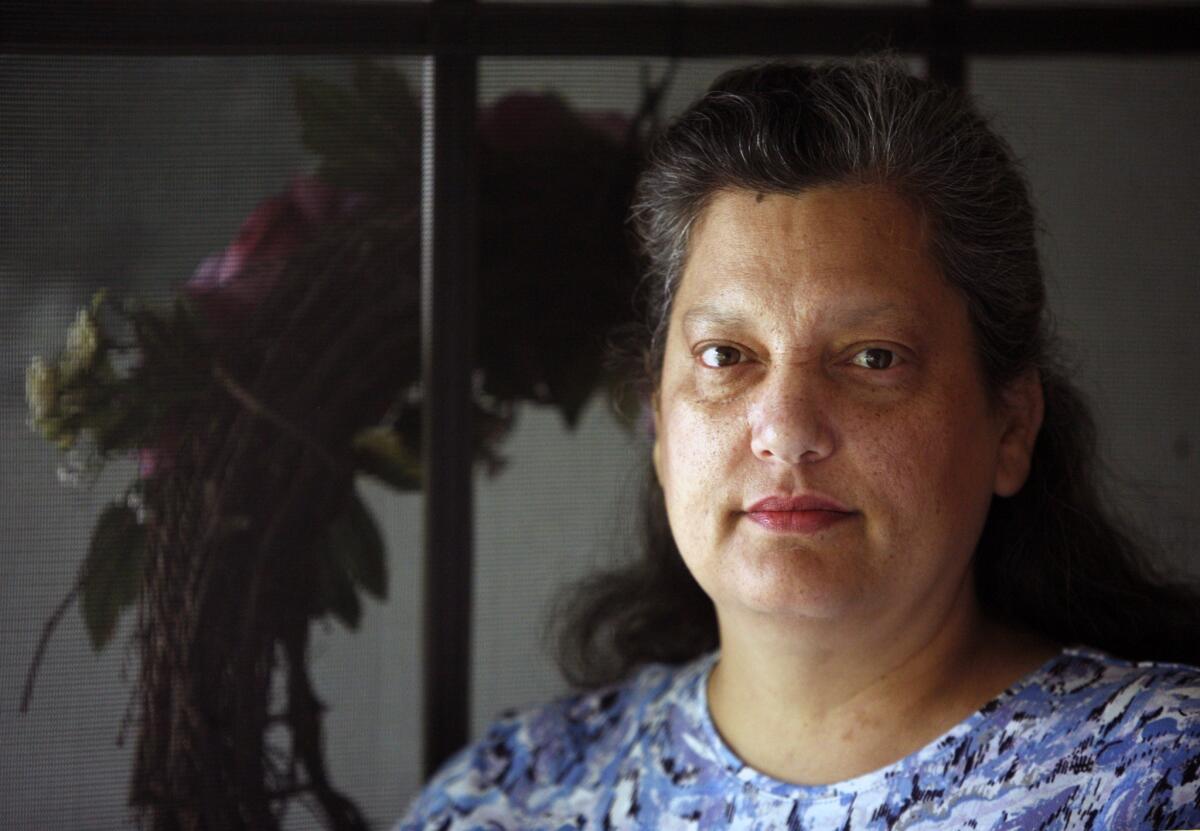Financial help for patients fighting cancer

After finding a lump in her breast, Laura Wells had to wait nearly six months before getting a confirmed diagnosis of cancer.
The 46-year-old Costa Mesa woman was uninsured and working part-time when she discovered the lump in 2007. She worked for months to scrape together enough cash, first to pay for an exam, then a mammogram, and finally to see a doctor who diagnosed her disease.
She frantically searched for programs to help pay for the surgery and chemotherapy she needed, initially without much success. “I was crying every day,” said Wells, a mother of three daughters.
The high cost of treating cancer is often a barrier to needed care, and can wreak havoc on a person’s finances. A recent study published in the journal Health Affairs found that cancer patients were nearly three times more likely to go bankrupt than people without cancer.
In her case, Wells found California’s Breast and Cervical Cancer Treatment Program, which provides assistance to low-income women. “I have been covered for everything,” she said. “I’m thrilled about that.”
There are many resources available to cancer patients to help lower their costs while undergoing treatment. The key, experts say, is knowing where to look.
•Discuss costs: Patients need to let their doctors know that finances are an issue, said Jen Flory, director of the Los Angeles-based Cancer Legal Resource Center, which provides free information on cancer-related legal issues (www.CancerLegalResourceCenter.org).
Referrals to specialists outside a person’s insurance network or prescriptions for drugs not on an insurer’s preferred list, for example, can drive costs skyward. “Most doctors are willing to work with the patient if they know what the concerns are,” Flory said.
•Special government programs: Every state has a Breast and Cervical Cancer Early Detection Program that provides care for people who are uninsured, low-income and in need of treatment. State-specific information can be found at the Centers for Disease Control and Prevention (www.cdc.gov/cancer/index.htm).
In addition, California offers a Prostate Cancer Treatment Program that will pay for care lasting up to a year for those who qualify. Details about those programs can be found on the website of the California Department of Health Care Services (www.dhcs.ca.gov).
•Private organizations: Beyond government programs, many community and advocacy groups can be a valuable resource.
“Many private organizations help pay for treatment, as well as rent, food, child care and other practical daily living expenses,” said Dolly Phillips, program director for the Cancer Support Community-Benjamin Center in Los Angeles (www.cancersupportcommunitybenjamincenter.org).
Phillips suggests looking for organizations that specialize in the type of cancer you have. The Leukemia and Lymphoma Cancer Society (www.lls.org), for example, offers a program to help pay for cancer treatment-related co-pays and insurance premiums.
Other specialty organizations can be found at the Cancer Financial Assistance Coalition website (www.cancerfac.org).
The American Cancer Society (www.cancer.org) has a National Cancer Information Center, which connects people to resources and organizations that help cover the cost of co-pays, premiums and other out-of-pocket medical costs: (800) 227-2345.
•Help replacing income: The Health Affairs study found that 40% to 85% of cancer patients stop working during initial treatment and can be out of work for up to six months or longer in some cases.
California, along with four other states (New York, New Jersey, Rhode Island and Hawaii), offers a temporary disability program that allows people to draw on benefits for up to a year to help offset income loss. You can check with the California Employment Development Department for more information (www.edd.ca.gov/disability).
In addition, two federal programs — Social Security Disability Insurance and Supplemental Security Income — are available to help replace lost income. Go to https://www.socialsecurity.gov for more information.
•Online fundraisers: Many patients have turned to crowd-funding websites to solicit help paying for care. “Lots of folks do fundraisers that way,” Phillips said.
Sites such as Giveforward.com, GoFundMe.com and YouCaring.com allow you to create a free Web page to solicit donations. However, you’ll often pay a fee of roughly 7% or 8% of the money you raise.
•Insurance protections ahead: Next year, the federal healthcare law will prevent insurers from denying coverage to anyone with a preexisting health condition or charging them more for the insurance.
“Cancer patients almost don’t believe you when you tell them that,” Flory said.
And, the benefits available will be better because of new federal requirements, said JoAnn Volk, project director at the Georgetown University Health Policy Institute.
“Plans with limited benefits that have a lot of gaps in them so you’re not covered for the things you need” will be a thing of the past, Volk said.
For instance, insurers are no longer allowed to impose caps on annual and lifetime medical expenses, a crucial protection for cancer patients. New policies available next year for individuals and employees at small firms will also have annual limits on consumers’ out-of-pocket medical expenses.
Starting Oct. 1, Californians can shop for a policy on the state’s new health insurance marketplace, called Covered California, at https://www.coveredca.com. Plans take effect Jan. 1.
Wells said she’s grateful for the insurance coverage she found, although she wishes she had more choices.
“I can only use the doctors they allow,” she said of the program. “But who can complain when they’re keeping you alive?”
Zamosky writes about healthcare and health insurance.
More to Read
Inside the business of entertainment
The Wide Shot brings you news, analysis and insights on everything from streaming wars to production — and what it all means for the future.
You may occasionally receive promotional content from the Los Angeles Times.










